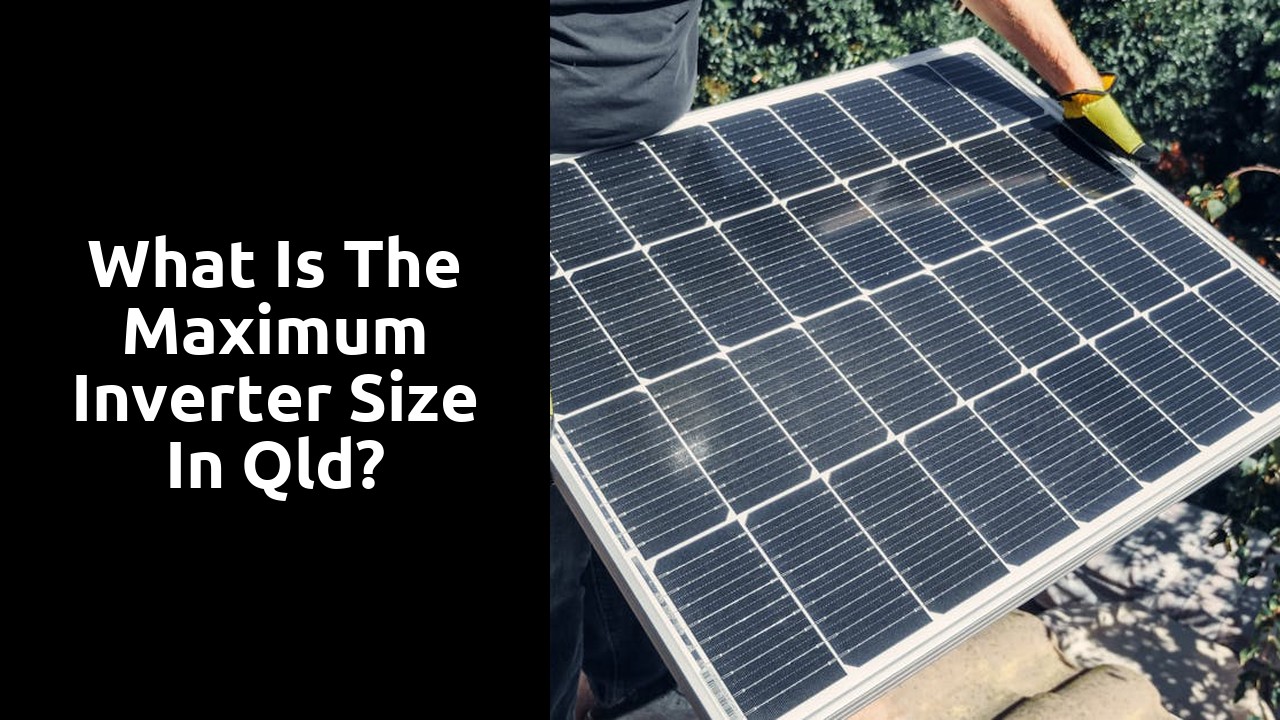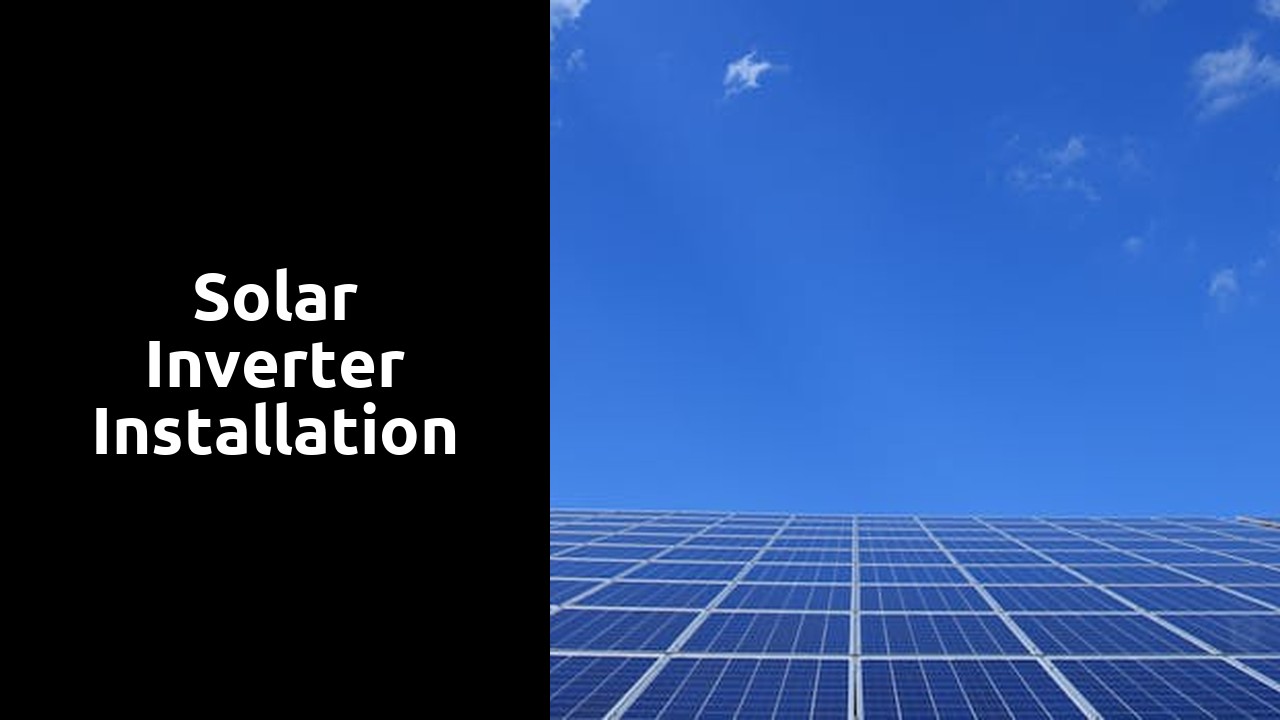
Table Of Contents
Compliance with Queensland's solar power regulations
Compliance with Queensland's solar power regulations is crucial for all residents looking to install solar systems. This includes adhering to the maximum inverter size allowed in the state. Queensland regulations require that the size of the solar inverter must not exceed 133% of the solar system's total rated capacity. This strict limit is in place to ensure the safety and efficiency of the solar power system, as well as to maintain the stability of the grid.
When planning a Solar Inverter Installation in Queensland, it is essential to carefully review the state's regulations to guarantee compliance. Failure to meet these regulations could result in penalties and potential issues with the grid connection of the solar system. By choosing an inverter size that aligns with Queensland's legal requirements, homeowners can enjoy the benefits of solar power while maintaining peace of mind knowing that their system is installed correctly and efficiently.
Ensuring the inverter size meets all legal requirements
When it comes to ensuring that your solar inverter size meets all legal requirements in Queensland, it is crucial to adhere to the set standards to avoid any potential issues. The maximum inverter size permissible in Queensland is determined by the regulations set forth by the state government, and it is important to comply with these guidelines for a smooth and successful Solar Inverter Installation. By ensuring that the inverter size aligns with the legal requirements, homeowners can rest assured that their solar power system is operating within the parameters of the law.
In Queensland, grid connection standards for solar inverters play a pivotal role in determining the maximum size allowable for installation. It is imperative to match the inverter specifications with the network codes and rules stipulated by the relevant authorities to maintain compliance. By selecting an inverter size that meets all legal requirements, homeowners can guarantee that their solar power system is not only safe and efficient but also in line with the regulations set forth for Solar Inverter Installation in Queensland.
Grid connection standards for solar inverters in Queensland
Grid connection standards for solar inverters in Queensland are crucial to ensure the safe and efficient operation of solar power systems. Compliance with these standards is a primary requirement for any Solar Inverter Installation. In Queensland, solar inverters must meet specific technical requirements as outlined by the local regulations to guarantee seamless integration with the grid.
When selecting a solar inverter size for installation in Queensland, it is imperative to pay close attention to the grid connection standards. The chosen inverter should align with the network codes and rules to prevent potential grid instability or connection issues. By matching the inverter specifications with the legal requirements, homeowners can ensure a smooth and reliable operation of their solar power system within the Queensland grid framework.
Matching inverter specifications with network codes and rules
When considering the maximum inverter size in Queensland, it is crucial to align the specifications with the network codes and rules governing solar power systems in the state. Queensland has specific regulations in place to ensure the safe and efficient operation of solar inverter installations. It is essential to carefully match the inverter size with these requirements to guarantee compliance and avoid any potential legal issues.
Installing a solar inverter that meets the network codes and rules in Queensland is paramount to the successful operation of the system. By selecting an inverter size that aligns with these specifications, homeowners can ensure that their solar power setup functions effectively and in accordance with the necessary standards. Therefore, when planning a Solar Inverter Installation in Queensland, it is vital to consider the network codes and rules to determine the maximum allowable inverter size for optimal performance and legal compliance.
Installation considerations for solar inverters
When it comes to Solar Inverter Installation, one crucial aspect to consider is the location. Ensuring that the solar inverter is installed in a well-ventilated area away from direct sunlight can enhance its efficiency and lifespan. Additionally, the inverter should be placed in a spot that is easily accessible for maintenance and repairs.
Another important factor in Solar Inverter Installation is the wiring. It is essential to use appropriate wiring techniques and materials to avoid any safety hazards or operational issues. Ensuring that the wiring is done by a qualified professional in accordance with Australian standards can help prevent any potential electrical faults or failures in the system.
Choosing an inverter size that aligns with system requirements and regulations
Selecting the appropriate inverter size is crucial for a successful Solar Inverter Installation in Queensland. It is essential to ensure that the chosen inverter size aligns with both the system requirements and the regulations set forth by the Queensland government. Failure to comply with these regulations can lead to fines and even potential system shutdowns.
To determine the maximum allowable inverter size for your solar system, it is imperative to consult the relevant guidelines and regulations in Queensland. Ensuring that the inverter size meets all legal requirements guarantees a smooth and compliant Solar Inverter Installation process. By matching the inverter specifications with the network codes and rules, you can rest assured that your solar system will function optimally and within the regulatory framework.
FAQS
What is the maximum inverter size allowed in Queensland?
In Queensland, the maximum inverter size allowed for a solar power system is 5kW for a single-phase connection and 30kW for a three-phase connection.
Why are there restrictions on the maximum inverter size in Queensland?
The restrictions on the maximum inverter size in Queensland are in place to ensure the stability and reliability of the electricity grid. By limiting the size of inverters, it helps prevent issues such as voltage fluctuations and grid overloading.
Can I install a larger inverter size than the maximum allowed in Queensland?
It is important to comply with Queensland's solar power regulations and guidelines regarding inverter size. Installing an inverter larger than the maximum allowed could lead to non-compliance and potential safety hazards, so it is recommended to adhere to the specified limits.
How can I determine the appropriate inverter size for my solar power system in Queensland?
When selecting an inverter size for your solar power system in Queensland, it is essential to consider factors such as the size of your solar panel array, the type of connection (single-phase or three-phase), and any specific requirements outlined in the regulations. Consulting with a qualified solar installer can help you determine the most suitable inverter size for your system.
What should I do if I have questions about inverter sizes and compliance in Queensland?
If you have any queries or concerns regarding inverter sizes and compliance in Queensland, it is advisable to seek guidance from a licensed solar installer or contact the relevant regulatory authorities for accurate and up-to-date information. Compliance with regulations ensures the safe and efficient operation of your solar power system.
